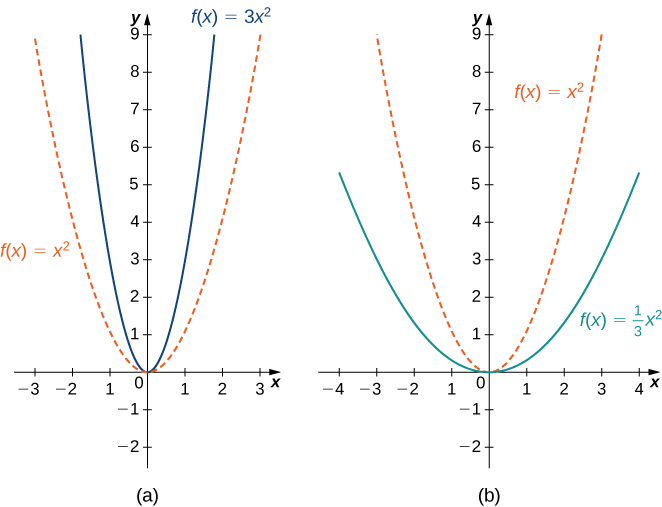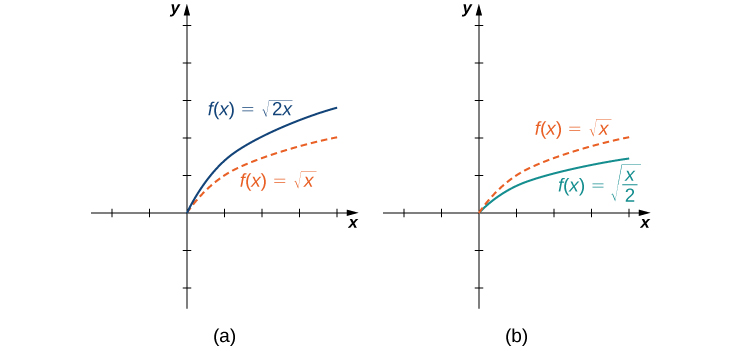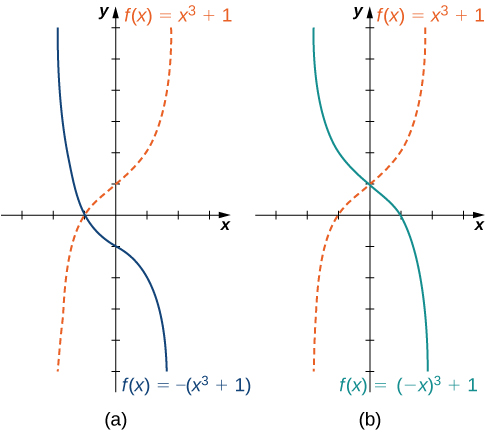| << Chapter < Page | Chapter >> Page > |
A vertical scaling of a graph occurs if we multiply all outputs of a function by the same positive constant. For the graph of the function is the graph of scaled vertically by a factor of If the values of the outputs for the function are larger than the values of the outputs for the function therefore, the graph has been stretched vertically. If then the outputs of the function are smaller, so the graph has been compressed. For example, the graph of the function is the graph of stretched vertically by a factor of 3, whereas the graph of is the graph of compressed vertically by a factor of ( [link] ).

The horizontal scaling of a function occurs if we multiply the inputs by the same positive constant. For the graph of the function is the graph of scaled horizontally by a factor of If the graph of is the graph of compressed horizontally. If the graph of is the graph of stretched horizontally. For example, consider the function and evaluate at Since the graph of is the graph of compressed horizontally. The graph of is a horizontal stretch of the graph of ( [link] ).

We have explored what happens to the graph of a function when we multiply by a constant to get a new function We have also discussed what happens to the graph of a function when we multiply the independent variable by to get a new function However, we have not addressed what happens to the graph of the function if the constant is negative. If we have a constant we can write c as a positive number multiplied by but, what kind of transformation do we get when we multiply the function or its argument by When we multiply all the outputs by we get a reflection about the -axis. When we multiply all inputs by we get a reflection about the -axis. For example, the graph of is the graph of reflected about the -axis. The graph of is the graph of reflected about the -axis ( [link] ).

If the graph of a function consists of more than one transformation of another graph, it is important to transform the graph in the correct order. Given a function the graph of the related function can be obtained from the graph of by performing the transformations in the following order.

Notification Switch
Would you like to follow the 'Calculus volume 1' conversation and receive update notifications?